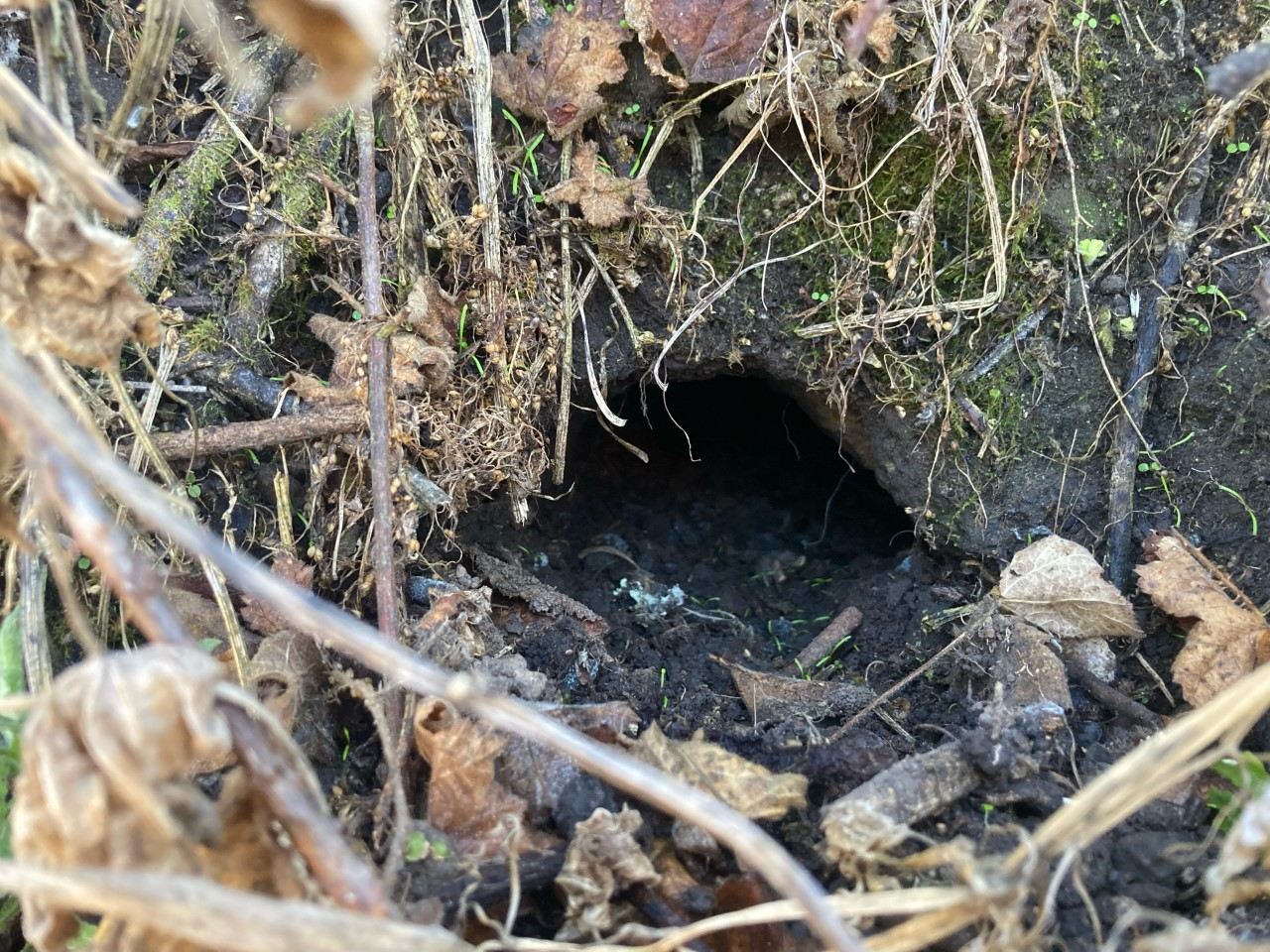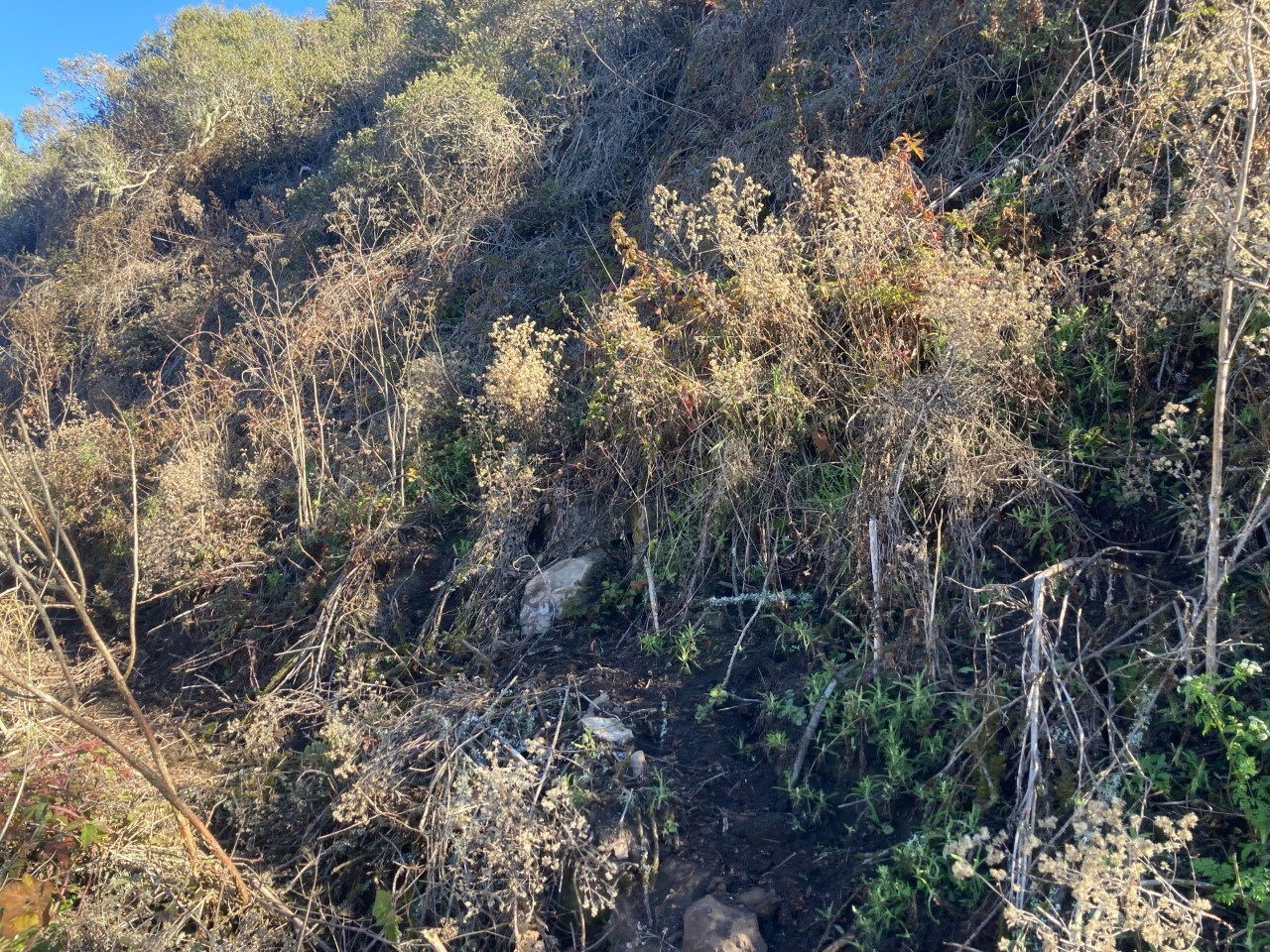Last updated: January 28, 2024
Article
Mapping Mountain Beavers in Point Reyes: A Collaboration Between the National Park Service and UC Berkeley

C. Champlin/UC Berkeley
The Point Reyes Mountain Beaver
The first thing to know about mountain beavers: they are not actual beavers. They do not have flat tails, nor do they build dams. But these muskrat-sized rodents are still worth caring about. Mountain beavers carry the distinguished title of the world's most primitive rodent. In fact, they are the last living member of their taxonomic family.
Point Reyes is home to an endemic subspecies of mountain beavers, which means they are found nowhere else. The Point Reyes mountain beaver (Aplodontia rufa phaea) looks something like an oversized gopher and spends most of its time in underground burrows, typically emerging at night to forage for plants, including ferns. Because the burrows are often hidden in dense thickets of blackberry, stinging nettle, and poison oak, finding them can be challenging.
Studies of Point Reyes mountain beavers have been limited by their elusive nature. A two-year collaborative project between the National Park Service and University of California Berkeley will address this deficit by surveying the Point Reyes peninsula to collect more information on the species and create tools to protect them.

C. Wemmer
An Ancient Rodent
Some physical characteristics of the mountain beaver hint at their prehistoric roots. Mountain beavers have simple kidneys that are inefficient at absorbing water which means they are restricted to humid areas with a succulent food supply. Adult mountain beavers consume a third of their body weight in water every day.
Mountain beavers also host another ancient species—the world's largest flea. The giant mountain beaver flea (Hystrichopsylla schefferi), which can be as large as half an inch, has been hitching a ride on the backs of Aplodontia through the ages.
Threats to the Mountain Beaver
The 1995 Vision Fire burned 40% of the mountain beaver's habitat in Point Reyes, according to pre- and post-fire surveys. Typically, mountain beavers don't travel far from their burrows, so abrupt changes to their habitat can be devastating. Researchers found that only 1.7% of the mountain beavers within the Vision Fire burn area survived, and they predicted it would take up to 20 years for populations to fully recover.
Fire continues to pose a threat to mountain beavers today. In 2020, the Woodward Fire at Point Reyes burned core mountain beaver habitat. The fire also exposed mountain beaver burrows, giving researchers the opportunity to identify and learn more about this elusive species.

C. Champlin/UC Berkeley
Park Efforts
In the fall of 2022, surveyors, including park biologists, started hiking through dense stretches of vegetation to look for holes in the ground at least six inches in diameter—the first sign of a mountain beaver. Typically, a burrow system will consist of several holes made by a single individual. The research methods are roughly based on a recent survey of another subspecies of mountain beaver found in Point Arena, California.
Luckily, surveyors in Point Reyes are not starting from scratch. The project is revisiting dozens of mountain beaver sites identified over 20 years ago by USGS researcher Dr. Gary Fellers. The current survey also includes over one hundred new, randomly selected plots across the seashore.
Burrow locations and other data on mountain beavers collected over the two-year survey will train a model to predict where the species is likely to live. That map will help natural resource managers avoid damaging mountain beaver habitat and could protect the species from potential fires in the future.






